What Is a Cover Letter and Why Do You Need It? (+ Examples)
What is a cover letter for a job application? What is the purpose of writing a covering letter? A great CV isn't enough–see what a cover letter can do for you.
Our customers were hired by:
Applying for a placement or work experience programme is doubly daunting: firstly, you’re approaching employers who haven’t necessarily advertised an opening—who don’t necessarily have an opening—and, secondly, you probably don’t have a lot of experience in approaching employers at all.
Plus, the stakes are kind of high; where you do your placement work can have a huge impact on what you choose to do after leaving school and generally what career path you end up starting out on. You might have your sights set on a particular company, but chances are you’re not the only one who’d like a placement there.
This article is here to show you how to write a cover letter for placement work that’s better than nine out of ten letters out there. You’ll learn how to stand out from the crowd in only the best possible senses. You’ll apply proven, data driven approaches that’ll come in handy for future job applications as well.
Use the LiveCareer cover letter builder and your cover letter will write itself. Choose a professional template, answer a few easy questions and the creator will generate a professional cover letter for you with just one click.
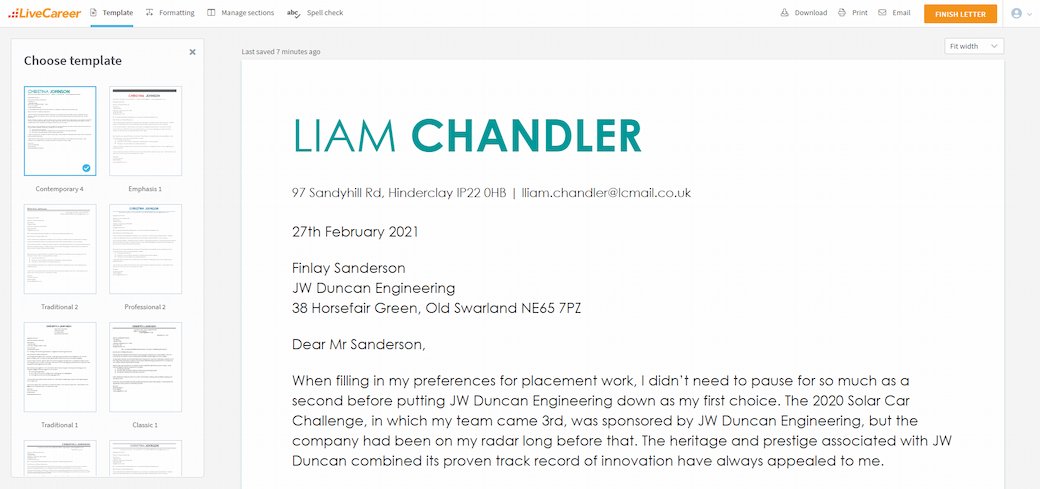
Want to write a different cover letter type? Check these articles:
According to our builder analysis*:
*The data comes from a period of the last 12 months (September 2023-September 2024).
Liam Chandler
97 Sandyhill Rd
Hinderclay
IP22 0HB
070 2222 2222
lliam.chandler@lcmail.co.uk
27th February 2021
Finlay Sanderson
Business Manager
JW Duncan Engineering
38 Horsefair Green
Old Swarland
NE65 7PZ
Dear Mr Sanderson,
When filling in my preferences for placement work, I didn’t need to pause for so much as a second before putting JW Duncan Engineering down as my first choice. The 2020 Solar Car Challenge, in which my team came 3rd, was sponsored by JW Duncan Engineering, but the company had been on my radar long before that. The heritage and prestige associated with JW Duncan combined its proven track record of innovation have always appealed to me.
Another thing that makes JW Duncan Engineering such an attractive option for placement work for me is the variety of work the company takes on. JW Duncan’s involvement in the new British-built ARM chips is well publicised, but few people are aware of its work on smelting-process improvement or soil-engineering contributions. I am currently completing my A-levels in Chemistry, Physics, and Electronics, a choice of subjects that I hope is a step in the direction of a similar level of flexibility.
I am on track to becoming a fourth-generation engineer. My decision to enter the profession was made some time ago, I do, however, need to decide on a specialisation. There are few companies in Britain at which I could be exposed to as wide a variety of projects as I could in JW Duncan Engineering.
As you can see, I am highly motivated to get the most possible from a placement with JW Duncan Engineering and I have the very basics to help make myself useful whilst there.
Thank you for your consideration. I would love to discuss the placement process with you further at your convenience.
Yours sincerely,
Liam Chandler
Though a cover letter for work experience may vary depending on individual situation and specific circumstances, it often includes the following information:
Now that’s a perfect cover letter template for work experience placements. Learn how to write your own letter for work experience, or explore what a cover letter is before you start.
Use the right header format for your placement cover letter. Simply align to the right your full name, postal address, email, and phone number. Leave a line and add the date of writing. Leave another line and align to the left your reader’s name, their job title, company name, and company postal address.
Liam Chandler
97 Sandyhill Rd
Hinderclay
IP22 0HB
070 2222 2222
lliam.chandler@lcmail.co.uk
27th February 2021
Finlay Sanderson
Business Manager
JW Duncan Engineering
38 Horsefair Green
Old Swarland
NE65 7PZ
You can adjust every cover letter created in the builder to meet the job requirements. Choose the name of your profession and the company to which you’re applying, and the LiveCareer cover letter builder will automatically adapt the content for you. Create a cover letter faster than you ever thought possible and apply for the job in record time.
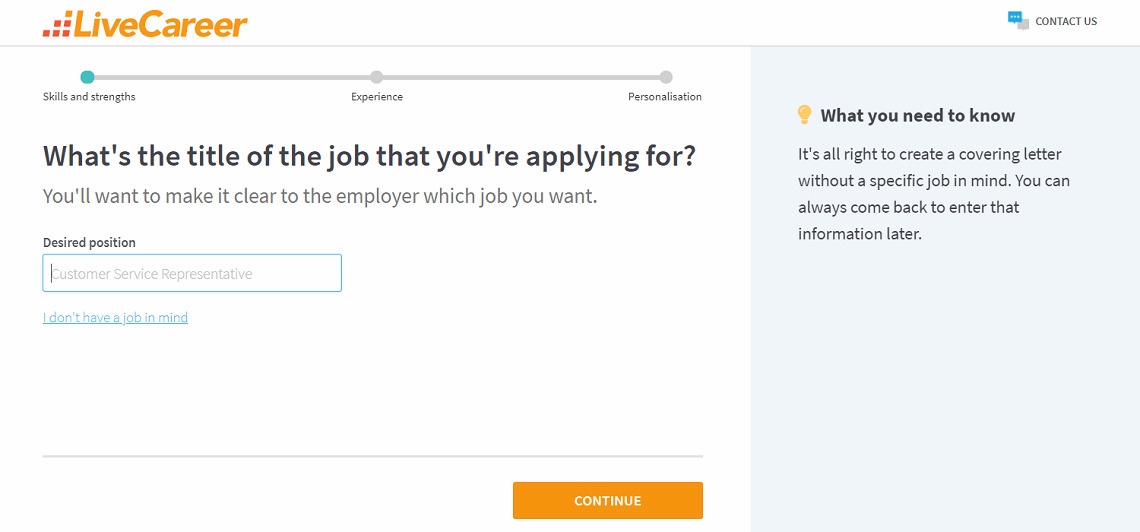
You’ve probably heard a lot about the importance of good eye contact and a firm handshake when meeting a potential employer for the first time. All of that is true, but before you get a chance to confidently stride into a room, hand outstretched, you need your placement cover letter to get your CV read.
Address your cover letter to a specific person. Specifically, and funnily enough, you should aim to address your placement cover letter to the person who’ll be deciding on your placement with the company. So what should you do if you don’t have a name, title and job title for this person to whom you’re writing?
The short answer is: find out. Ask around at school if this is part of a formal placement programme. Check the organisation’s website—look for an ‘our people’ or ‘staff’ page. Search around on LinkedIn. And if none of these help, do the simplest and for many people scariest thing: call and ask.
In the extremely unlikely event that you can’t pin down a name, do your best to pin down a job title (like HR Manager) or function (like Placement Coordinator). Be as specific as you can, and absolutely do not cop out with a sterile and outdated ‘Dear Sir/Madame’ or ‘To Whom It May Concern’.
The best salutation is one that’s friendly, professional, and appropriately formal. If you’re relatively young (under 20, say), then go with ‘Dear + title + surname’ (e.g. ‘Dear Ms Smith’). If the person you’re writing to isn’t too much more senior than you, then go with ‘Dear + first name’ (e.g. ‘Dear Jane’).
Double-check the addressee’s sex before using a gendered title like ‘Mr’ or ‘Ms’. Always use ‘Ms’ for women who don’t hold academic or religious titles or military rank. If you can’t be sure of your reader’s sex and don’t feel comfortable starting off on a first-name basis, use ‘Dear + first name + surname’.
Dear Mr Sanderson,
The way you begin your cover letter will set the tone for how your application is received. A good opening paragraph will grab the employer’s attention, show them how enthusiastic you are about doing your placement with them, and show how you’re a good fit for the company.
Start with your passion for the work and the company. Very briefly describe what you’re studying and introduce one of your academic or extracurricular achievements, but only if it’s directly relevant to the placement for which you’re applying. Include a belief statement in which you describe how you’re a good fit.
A belief statement is your way of showing that your goals and values are in line with the company’s claimed goals and values. To do this, you first need to know what the company sees as its goals and values. The best and most obvious source for such information is the company’s website and the internet at large.
Check the ‘about us’ section of the company’s website, especially any mention of its ‘mission’, ‘vision’, and ‘values’. Check for any press releases posted on the site. Search online for recent news regarding the company, especially anything that looks like it was put out for PR purposes. Scan through its social media.
Drop any relevant facts you find about the company into your opening paragraph. Make it clear that your goals fall in line with the company’s by focusing on what you can do for the company as much as what you hope to learn from the placement. Show that you’re a good fit in terms of corporate culture, too.
What you want to end up with is 3–5 sentences covering three main points in 40–80 words. (1) Your passion for the role and the company (show off your knowledge about the company here), (2) a relevant achievement that shows what you bring to the table, and (3) a belief statement that shows how you’re a good fit.
If you happen to have some work experience under your belt, then you can substitute a work achievement for the second point above. An achievement in this sense is the description of actions you took at work (often in response to a challenge of some kind) and the benefits that went to your employer as a result.
Did someone within the company suggest that you apply for a placement there? If so, then this is the appropriate place to drop names. Being referred to the programme can only work in your favour, and a single, classy mention of the fact in your placement cover letter is just the way to get that fact across.
When filling in my preferences for placement work, I didn’t need to pause for so much as a second before putting JW Duncan Engineering down as my first choice. The 2020 Solar Car Challenge, in which my team came 3rd, was sponsored by JW Duncan Engineering, but the company had been on my radar long before that. The heritage and prestige associated with JW Duncan combined its proven track record of innovation have always appealed to me.
You don’t have to create any content yourself. The LiveCareer cover letter generator will automatically suggest the best content for your cover letter with ready-made examples and expert tips.
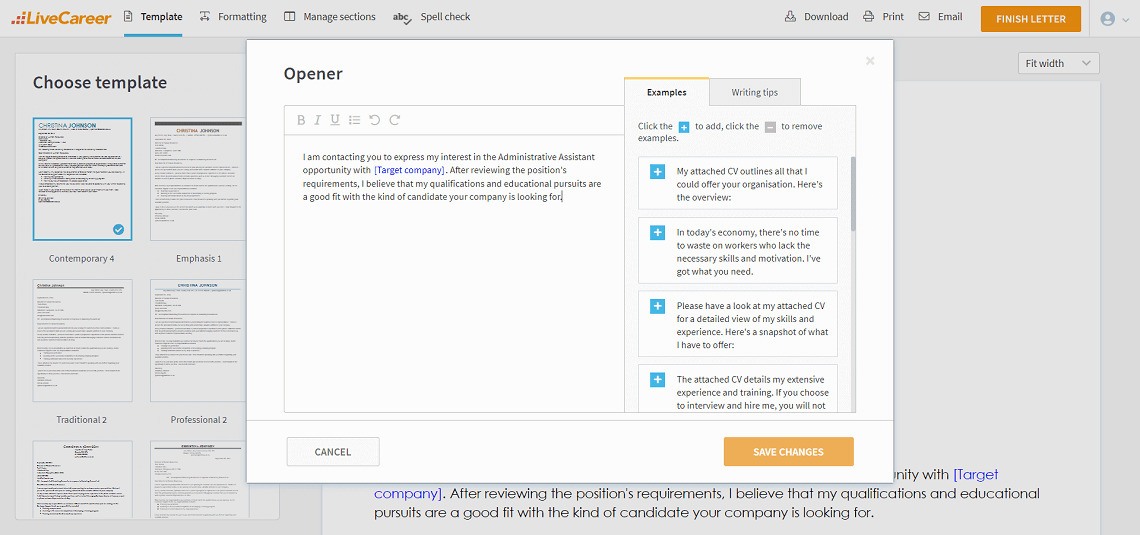
When writing a cover letter for a job opening, the goal in the main body paragraph is to show what you can do for this employer by laying out what it is that you managed to do for previous employers. Since you’re looking at how to write a cover letter for a placement, it stands to reason that you don’t have much experience.
If you have 2–3 relevant achievements—whether from a paid or volunteer job, another placement, an internship or from your studies—then you have everything you need to write an effective main body paragraph for your placement cover letter. Simply string these achievements together and flesh them out as required.
You can still write a cover letter for a placement that’s at least as effective as anyone’s even if you don’t have such achievements at the ready. First of all, continue to demonstrate your enthusiasm for the company. Do this by showing off your knowledge of its culture, history, and current developments.
Indicate your suitability for the role by briefly and succinctly describing what it is that you’re studying and how it’s relevant to the placement position at hand. Don’t labour the point if the connection is obvious, though, for example if you’re studying engineering and writing an engineering placement cover letter.
If you have experience and achievements to include in your placement cover letter, then keep it to 120–200 words, spread across one or two paragraphs. Your main body paragraph will be considerably shorter if you’re writing your placement cover letter without experience, and that’s absolutely fine.
Another thing that makes JW Duncan Engineering such an attractive option for placement work for me is the variety of work the company takes on. JW Duncan’s involvement in the new British-built ARM chips is well publicised, but few people are aware of its work on smelting-process improvement or soil-engineering contributions. I am currently completing my A-levels in Chemistry, Physics, and Electronics, a choice of subjects that I hope is a step in the direction of a similar level of flexibility.
I am on track to becoming a fourth-generation engineer. My decision to enter the profession was made some time ago, I do, however, need to decide on a specialisation. There are few companies in Britain at which I could be exposed to as wide a variety of projects as I could in JW Duncan Engineering.
Wrap up your placement cover letter by tying up any loose ends and summarising your main body paragraph(s). Give these things a miss If there are no loose ends to tie up and summarising would involve simply repeating yourself. Every sentence you write should serve a purpose—respect your reader’s time.
Thank your reader for the effort they’re putting into considering your placement application. This isn’t just a matter of good manners, it can have a positive effect on your candidature. End with a call to action, through which you make it clear that you’re keen to move on to the next stage of the placement process.
Keep your wrap-up very brief: 40–60 words maximum.
As you can see, I am highly motivated to get the most possible from a placement with JW Duncan Engineering and I have the very basics to help make myself useful whilst there.
Thank you for your consideration. I would love to discuss the placement process with you further at your convenience.
How you sign off from your placement cover letter is determined by whether or not you managed to address it to a named person. Use ‘Yours sincerely’ if you addressed your cover letter to someone by name and ‘Yours faithfully’ if you didn’t, i.e. if you used something like ‘Dear HR Manager’ instead.
Yours sincerely,
Liam Chandler
Getting a placement position is in most ways no different from getting a regular job. First impressions are important, and when there’s any competition at all for a given spot, employers are going to prefer candidates who demonstrate traits like attention to detail and taking pride in their work.
Show that you have these traits by making sure your cover letter and CV are absolutely word-perfect. Not every job requires good English skills, but spelling and grammar mistakes in your application say as much about your dedication and attention to detail as they do your English skills.
Follow proven cover letter format. Keep your placement cover letter down to a single page in length, never more. If you follow a good guide like the one in this article, you’ll end up with a total of about 250–400 words. A cover letter can sometimes be as long as 500 words, though. This should nicely fill an A4 page, leaving you with plenty of white space to clearly separate paragraphs and sections.
Choose a professional CV font (it's the same for a CV and a cover letter) that doesn’t draw attention to itself, something low-key like Noto, Garamond, Liberation, Arial or even Calibri. For a clean CV layout, keep the font locked in at 11–12 points and the margins at the default 2.5 cm. Save your placement cover letter in PDF unless explicitly asked for something else.
A cover letter alone simply won’t be enough—you need an impactful CV, too. Create your CV in minutes. Just follow our wizard and fill in every CV section with ready-made content. Get started by choosing a professional CV template.
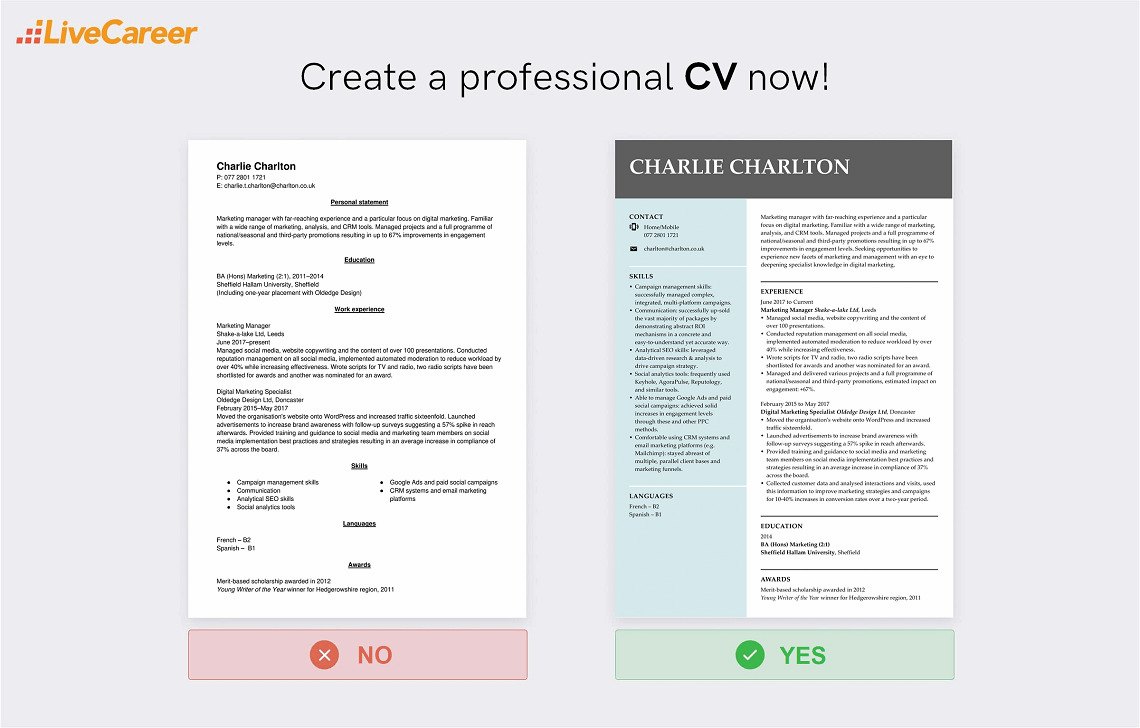
I hope this article has helped you take that first step into the labour market. Is there anything here that you’d like more information on? Leave any questions, comments, and work experience stories you have to share down in the comments section below.
Our editorial team has reviewed this article for compliance with Livecareer’s editorial guidelines. It’s to ensure that our expert advice and recommendations are consistent across all our career guides and align with current CV and cover letter writing standards and trends. We’re trusted by over 10 million job seekers, supporting them on their way to finding their dream job. Each article is preceded by research and scrutiny to ensure our content responds to current market trends and demand.
About the author
Since 2013, the LiveCareer UK team has shared the best advice to help you advance your career. Experts from our UK editorial team have written more than one hundred guides on how to write the perfect CV or cover letter.
Rate this article:
Placement cover letter
Average:
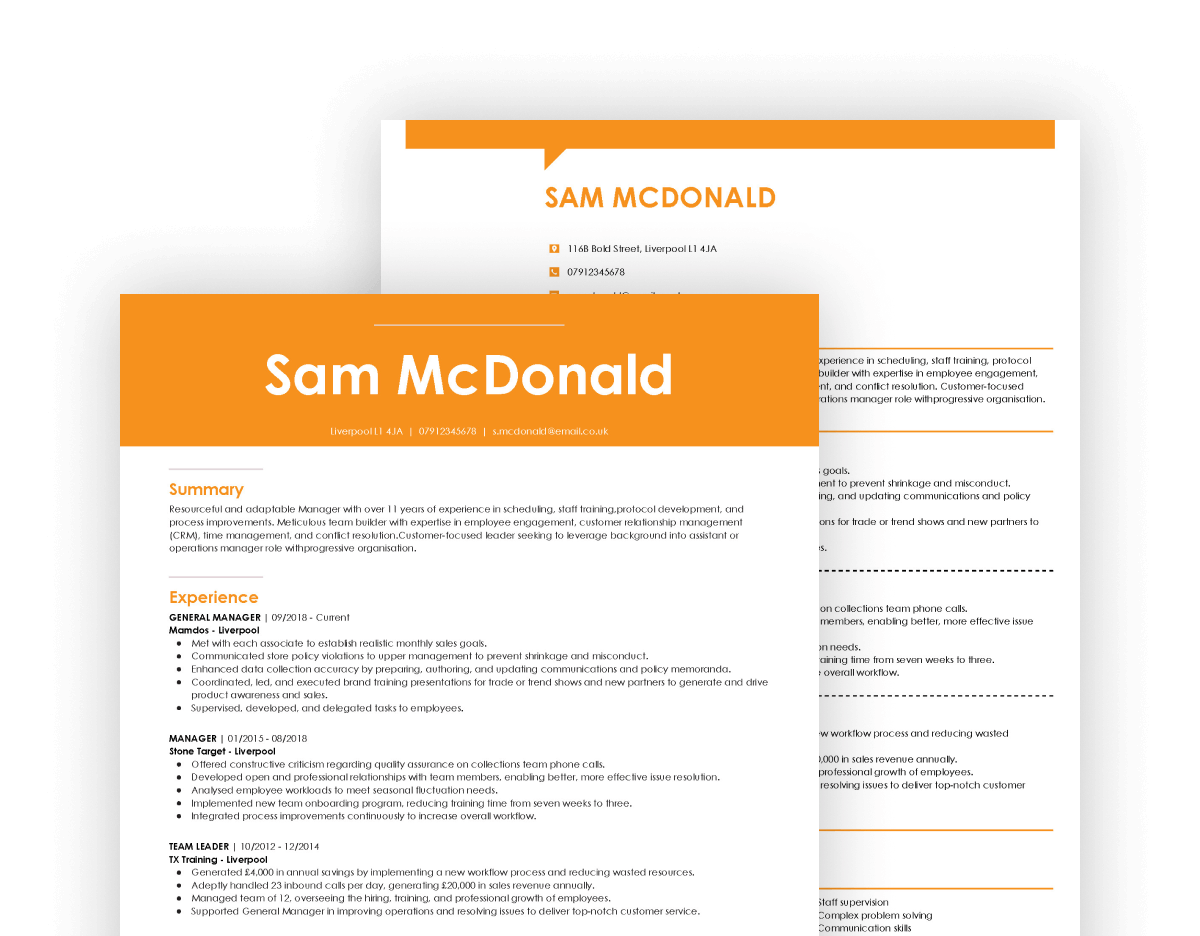
What is a cover letter for a job application? What is the purpose of writing a covering letter? A great CV isn't enough–see what a cover letter can do for you.
Write a motivational letter and strengthen your application. Express your enthusiasm and hope for the opportunity with a perfect motivation letter for a job.
How to write a letter of application that'll make recruiters take notice? See letter of application example to guide you through the whole process.
Our customers were hired by: